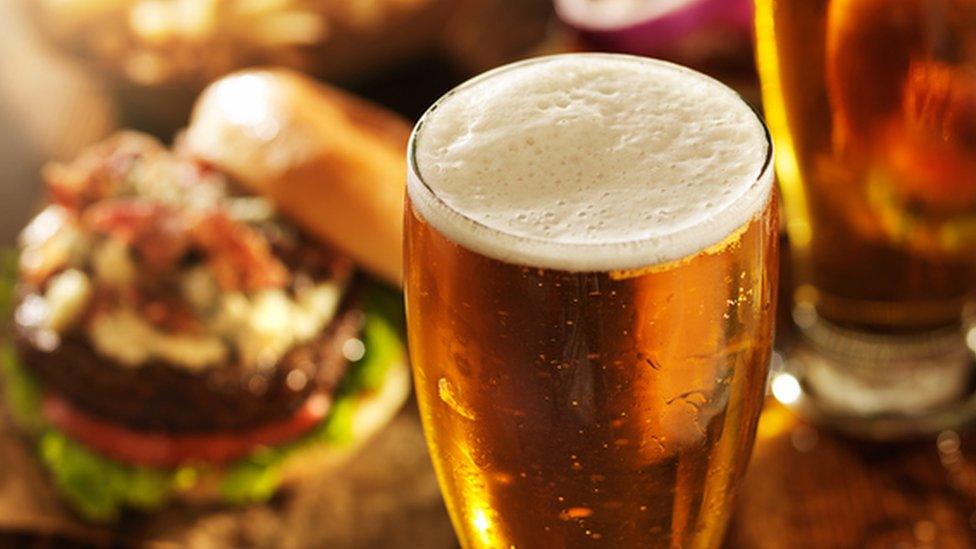Alcohol flips brain into hungry mode
- Published

Alcohol switches the brain into starvation mode, increasing hunger and appetite, scientists have discovered.
In tests on mice, alcohol activated the brain signals that tell the body to eat more food.
The UK researchers, who report their findings in the journal Nature Communications, believe the same is probably true in humans.
It would explain why many people say they eat more when they have had a few drinks.
Rather than loss of restraint, it is a neuronal response, the Francis Crick Institute team says.
Aperitif
The mice were given generous doses of alcohol for three days - a dose being equivalent to around 18 units or a bottle-and-a-half of wine for a person.
The alcohol caused increased activity in neurons called AGRP. These are the neurons that are fired when the body experiences starvation.
The mice ate more than normal too.
When the researchers repeated the experiment but blocked the neurons with a drug, the mice did not eat as much which, the researchers say, suggests that AGRP neurons are responsible for the alcohol-induced eating.
Alcohol itself contains lots of calories. A large glass of wine, for example, can contain as many as a doughnut.
The study authors, Denis Burdakov and colleagues, say understanding how alcohol changes the body and our behaviour could help with managing obesity.
Around two-thirds of adults in the UK are overweight or obese.
Prof Sir Ian Gilmore, from Alcohol Health Alliance UK, said people should be made aware of the impact alcohol can have on how much they eat and what they eat, along with the associated health risks.
"Alcohol is responsible for over 60 illnesses and conditions on its own, and drinkers place themselves at even greater risk when their drinking is combined with over-eating: especially because when people drink they are more likely to make less healthy food choices.
"Alcohol and obesity cause 90% of liver deaths and alcohol is twice as toxic to the liver in very obese patients."
Follow Michelle
- Published30 December 2016
- Published8 November 2016